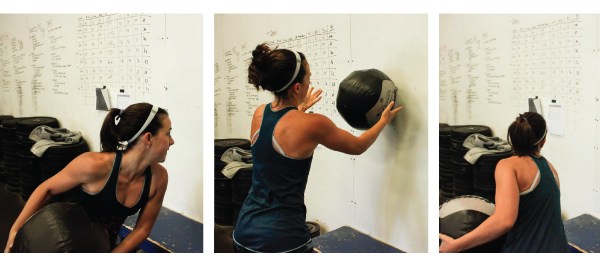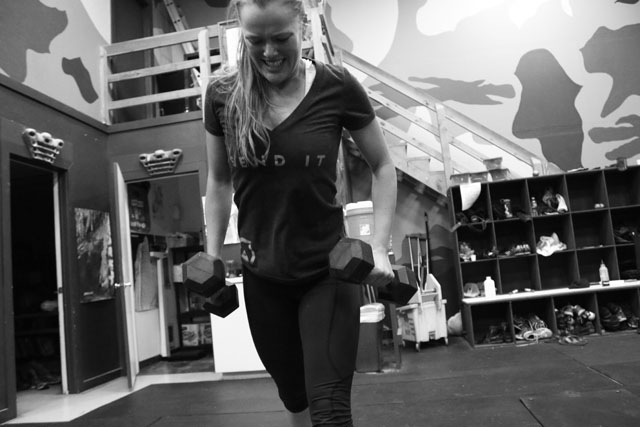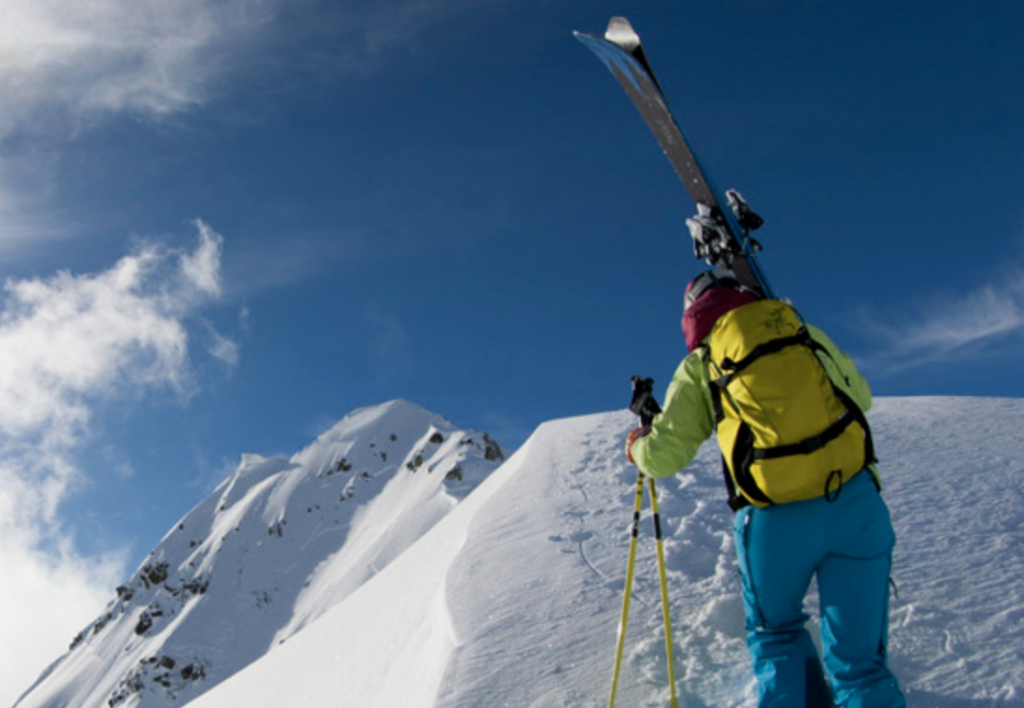
By Rob Shaul
Our skiers are fully immersed in our dryland ski training cycle to get ready for the snow. Here are 5 exercises we’re using in our programming, why we love them, and some quick training circuits to try. Freeskier, Hadley Hammer, demonstrates technique and shares her perspective.
#1 Lateral Ski Box Hops

Technique Tips: Start on the side of a 16-20” box or bench, then hop on top of the box, landing in a quarter squat. Hop down to the other side, and repeat for 30 seconds. Build up to 90 seconds
Why We Use It: The 90-second lateral ski box hop effort is one of the assessments used by national ski racing teams to evaluate ski-specific leg-strength endurance and work capacity. It does a good job of replicating the strength and cardio demands of a hard, steep, ski run.
Hadley’s Perspective: “When I’m doing box hops, I’m pretending I’m blasting down a mogul field. That feeling of pumping your legs as fast as possible while trying to keep your upper body as still as possible and staying light on your feet.”
#2 Rotational Wall Ball Slams
Technique Tips: Face wall square, about 2-feet away. Rotate to the right and slam the ball against the wall – so it banks off and you catch it on your left side. Repeat on the other side. Use a 10-15 pound medicine ball and be fast and explosive.
Why We Use It: This exercise trains rotational core strength and endurance – the one of the two primary core strength demands of alpine skiing.
Hadley’s Perspective: “I’ve been heading down to Mt. Hood the past few summers to train on rails and jumps. My goal with my skiing is to incorporate more freestyle elements. Wall ball slams train my core and use rotational movement to do so.”
#3 Shoulder Blasters
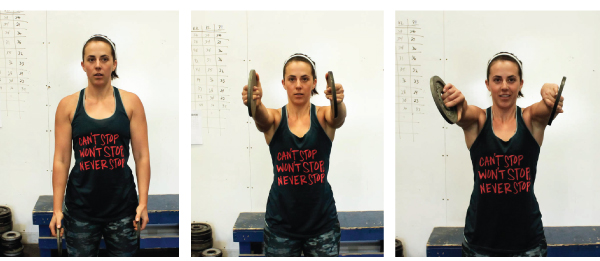
Technique Tips: Part 1: With hands facing forward, raise arms from your side up to parallel with your shoulders. Lower and repeat 10x.
Part 2: Then, with thumbs pointed toward the ground, repeat the same movement 10x.
Part 3: With hands facing your body, raise arms from your side up in front of your body until parallel to shoulders. Lower and repeat 10x.
Part 4: Then, with thumbs pointed toward the ground, repeat the same movement 10x.

Part 5: With hands facing forward, raise arms from shoulder height until hands cross above your head. Lower and repeat 10x.
Part 6: With hands facing forward, start with arms bent at 90 degrees and press arms above head until fully extended. Lower and repeat 10x.
Why We Use It: Shoulder injuries from crash impacts are a real injury concern for alpine skiing. Shoulder Blasters build shoulder strength, endurance and mass which acts like armor for the skier against injury.
Hadley’s Perspective: “My season last year was marked with spectacular crashes. My shoulders took most of the brunt of these crashes. You don’t use your shoulders necessarily to ski (strength-wise), but it doesn’t mean they don’t need to be strong enough to handle impact.”
#4 Kneeling Plate Half-Moons
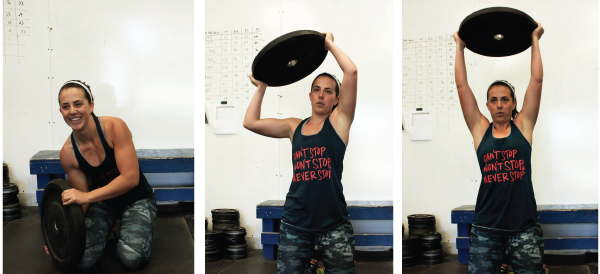
Technique Tips: Kneel with a 25lb plate on one side of your body. Press it over your head, and then bring it down to the opposite side of your body. Repeat. Engage your core.
Why We Use It: This exercise trains anti-rotational core strength and endurance – the second of the two primary core strength demands of alpine skiing.
Hadley’s Perspective: “Core, core, core. There is a lot of stabilization involved in skiing and having a strong core is essential.”
#5 Quadzilla Complex
Technique Tips: Part 1: With 15/25# dumbbells, do 3 in-place lunges each leg. Immediately start part 2.
Part 2: With 15/25# dumbbells, do 3 jumping lunges each leg. Immediately start part 3.
Part 3: Drop the dumbbells and complete 3 jumping lunges each leg (6 total). Immediately start part 4.
Part 4: Perform 6 jump squats.
(If you do this week after week, add one more rep each week to increase intensity.)
Why We Use It: The Quadzilla Complex trains eccentric leg strength. When skiing, gravity “bounces” the skier down the ski hill – and skier works not so much to hop up, but rather to fight gravity’s effort to push him/her into the mountain. Fight this downward force takes eccentric strength.
Hadley’s Perspective: “This exercise is brutal. It replicates that exact quad burning you feel at the beginning of the season or during a long run. When going through the quadzilla complex, I just think about skiing the entire time instead of the pain.”
You Might Also Like MTI’s 30 Minutes Per Day Dryland Ski Training Plan
